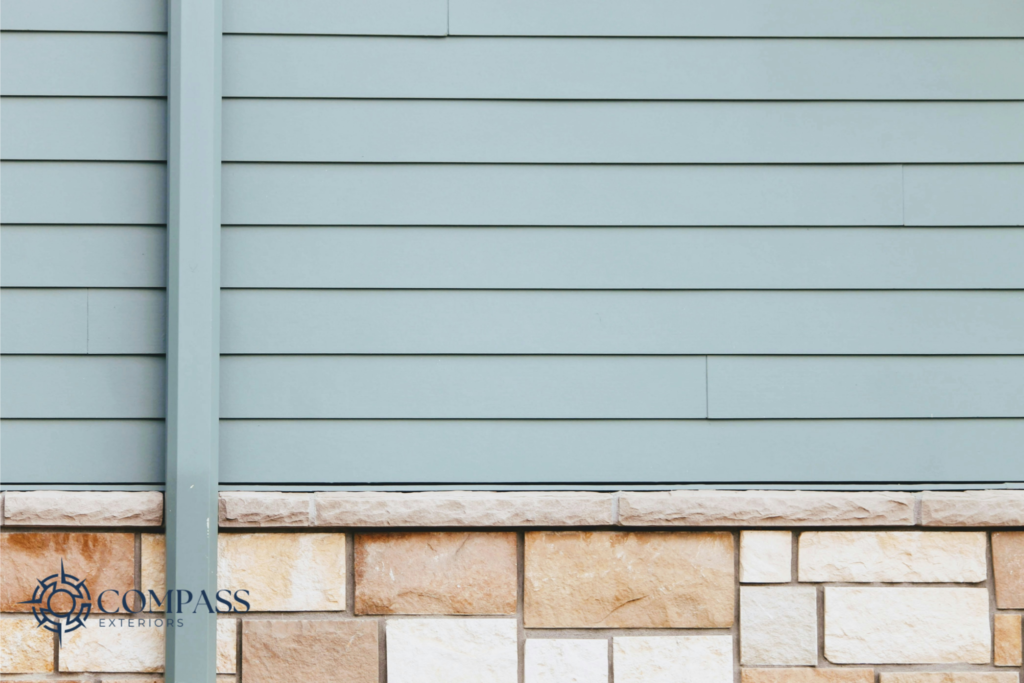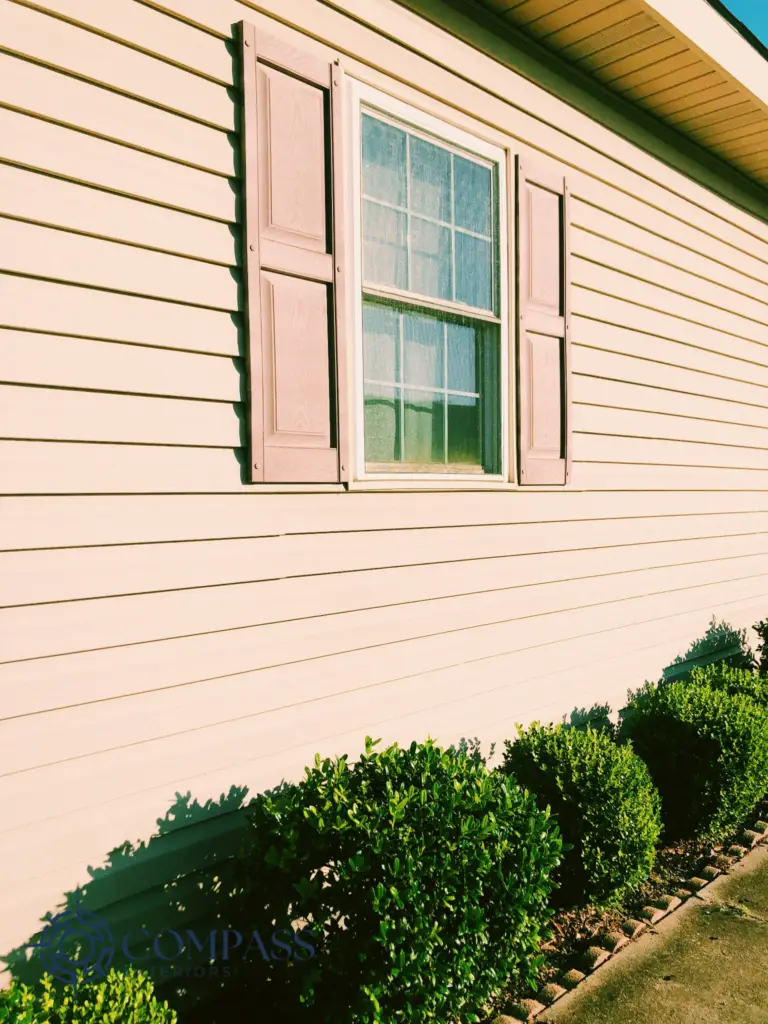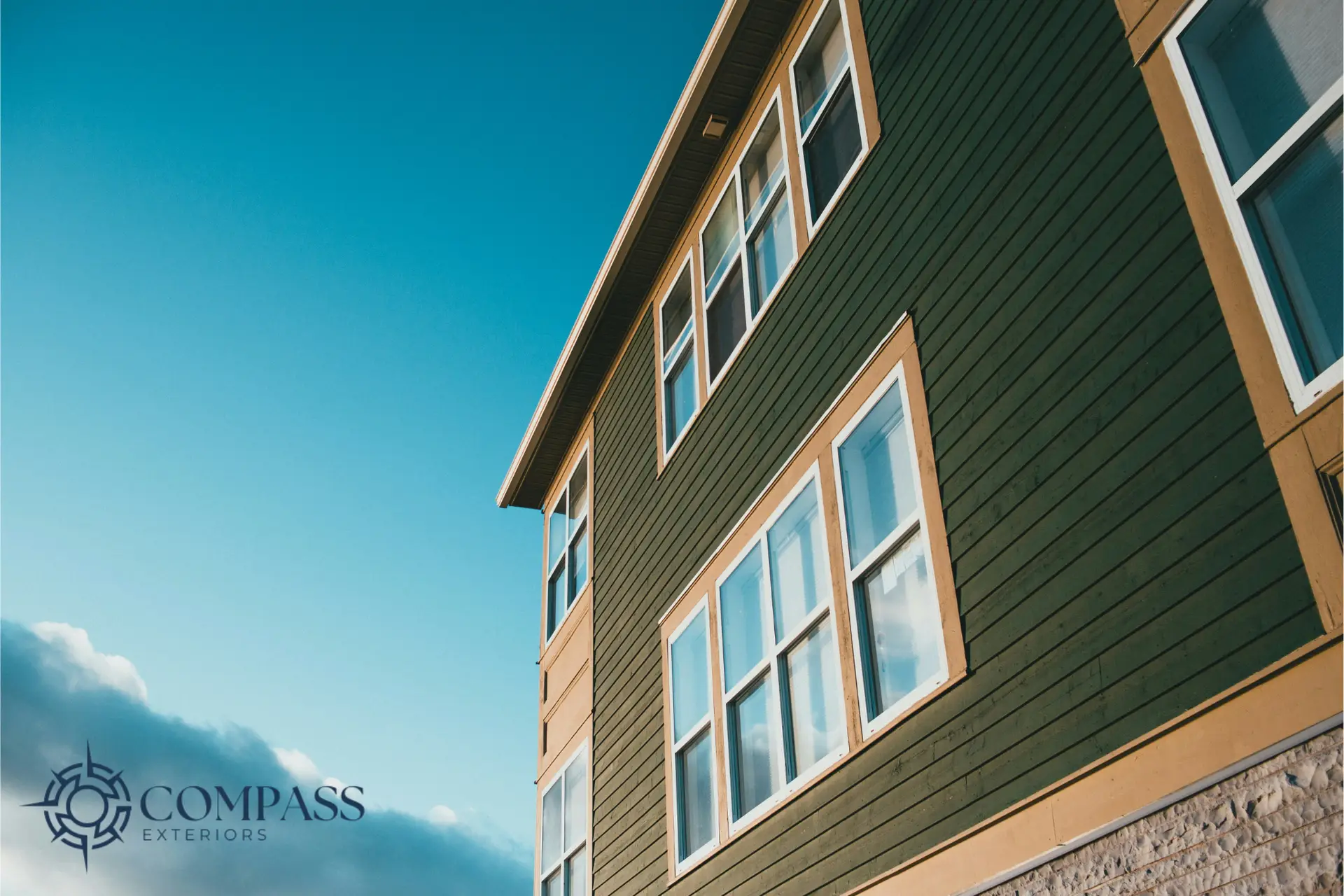Embarking on the journey to refresh your home’s exterior with a new coat of paint is not just about changing its color—it’s about rejuvenation, protection, and enhancing curb appeal. However, painting your home’s siding involves much more than picking a color and starting to paint. It requires thoughtful preparation, the right materials, and an understanding of the process to ensure a lasting and beautiful finish. At Compass Exteriors, we understand the importance of this decision and are here to guide you through every step of the way. In this comprehensive guide, we’ll explore the seven crucial things you need to know before painting your siding, ensuring that your home not only looks its best but also receives the care and protection it deserves.
High-Level Overview
- Prepping and Cleaning the Exterior: The foundation of a great paint job is in its preparation. Learn how to effectively clean and prep your siding for painting.
- Repairing and Resealing: Understand the importance of repairing damages and resealing your siding before painting to ensure a smooth, lasting finish.
- The Art of Taping: Discover how proper taping techniques can transform your paint job from amateur to professional.
- Determining Siding Type and Paint Compatibility: Not all paints are suitable for every siding material. Find out how to select the right paint for your specific siding type.
- Color Considerations and Implications: Choosing the right color involves more than personal preference. We’ll discuss the implications of color choice, including HOA regulations.
- Types of Paint: Varnish, oil-based, or acrylic—knowing which type of paint to use is essential for durability and aesthetics.
- Optimal Painting Conditions: Timing is everything. Learn the best time of year to paint your house to ensure the paint adheres properly and lasts longer.
With these insights, you’ll be well-equipped to make informed decisions throughout your exterior painting project, ensuring a result that you’ll be proud of for years to come. Let’s dive into the details and get your home looking its absolute best.
1. Preparing Your Home’s Siding for Painting
Before embarking on the transformative journey of painting your home’s siding, preparation is key. A well-prepped surface not only ensures that your paint adheres properly but also extends the life of your paint job. Start by inspecting your siding for any dirt, mildew, or algae. These elements can hinder paint adhesion, so it’s crucial to clean your siding thoroughly. For most types of siding, a soft-bristle brush and a mixture of mild detergent and water will do the trick. For tougher stains, a power washer on a low setting may be necessary, but proceed with caution to avoid damage.
Next, assess your siding for any signs of damage. Look for cracks, warping, or rot, especially in wood sidings. These issues should be repaired prior to painting to prevent further deterioration. It’s also a good time to reseal any gaps or seams with a high-quality exterior caulk. This not only prevents water infiltration but also creates a smoother, more uniform surface for painting.
2. Repairing and Resealing Siding: The Foundation of a Lasting Paint Job

Before you even think about opening a can of paint, inspecting your home’s siding for any damage is crucial. From cracks and holes to loose boards, minor imperfections can become major issues if not addressed. Repairing and resealing your siding not only provides a smooth canvas for painting but also protects your home from moisture, pests, and further decay.
Start by thoroughly examining the siding. Look for signs of wear such as rot in wood, cracks in vinyl, or dents in aluminum. These areas need immediate attention. For wood siding, use a wood filler to patch holes and cracks, then sand the area smooth. Vinyl siding might require replacement pieces for damaged sections, while aluminum siding can often be repaired with auto-body filler.
Sealing your siding is the next step. Apply a high-quality caulk to seal any gaps around windows, doors, and other junctions. This step prevents water infiltration, which is critical for the longevity of your paint job.
3. The Art of Taping
Achieving a crisp, clean finish on your home’s exterior is significantly enhanced by the careful application of tape along edges, windows, doors, and trim. Taping, often overlooked, is a pivotal step in the painting process, serving as the barrier that prevents bleed-through and ensures sharp lines that define professional-quality work. It’s essential to select a high-quality painter’s tape that adheres well but is also easy to remove without leaving residue or damaging surfaces.
When applying tape, ensure surfaces are clean and dry to promote good adhesion. Apply the tape evenly and smoothly, pressing down the edges to seal against the surface to prevent paint from seeping underneath. Remember, the extra time spent on taping off areas meticulously pays off in the neatness and precision of your paint job, making this step invaluable for homeowners aiming for perfection in their exterior painting project.
4. Determining Siding Type and Paint Compatibility
The longevity and appearance of your paint job are directly influenced by the compatibility between the paint and your home’s siding material. Each type of siding, whether wood, vinyl, aluminum, or fiber cement, has specific requirements that affect which paint formulas work best. For instance, wood siding benefits from breathable, flexible paints like acrylic latex that accommodate wood’s natural expansion and contraction. Vinyl siding, on the other hand, requires paint that can adhere well to its surface and is resistant to warping under varying temperatures.
Before selecting paint, it’s crucial to identify your siding material and research which types of paint are recommended for it. Manufacturers often provide guidelines or certifications for paints deemed compatible with their products. Opting for the right paint ensures not only aesthetic appeal but also durability, protecting your home’s exterior against the elements and wear over time. This step is indispensable in achieving a successful exterior painting project.
5. Color Considerations and Implications
Choosing the right color for your home’s siding is more than a matter of personal taste; it’s a decision with broad implications. The color can influence your home’s energy efficiency, with lighter colors reflecting more sunlight and potentially reducing cooling costs. It’s also crucial to consider the architectural style of your home and the surrounding landscape to ensure the color complements rather than clashes.
Furthermore, homeowners should be aware of any Homeowners Association (HOA) regulations governing color choices in their community. Violating these rules can lead to mandatory repaints or fines. Researching and possibly consulting with your HOA before making a final decision can save time, money, and frustration.
Finally, consider the psychological impact of color on your home’s appearance. Certain colors can make your home appear larger or smaller, welcoming or imposing. Taking the time to choose the right color can significantly enhance your home’s curb appeal and value.
6. Types of Paint
Selecting the correct type of paint for your siding is pivotal in ensuring durability, aesthetics, and protection against the elements. Exterior paints are primarily categorized into varnish, oil-based, and acrylic (latex) paints, each with distinct characteristics suited for different siding materials and climatic conditions.
Varnish, often used for its protective qualities, adds a durable layer with a glossy finish, ideal for wood surfaces. Oil-based paints are renowned for their robustness and smooth application, providing a moisture-resistant layer that’s particularly beneficial for areas exposed to harsh weather. Acrylic paints, on the other hand, are favored for their versatility and environmental friendliness. Their quick-drying nature and resistance to fading and cracking make them suitable for a variety of siding materials, including vinyl and fiber cement.
Understanding the properties of each paint type allows homeowners to make an informed decision that aligns with their siding material, maintenance expectations, and aesthetic preferences, ensuring a long-lasting and visually appealing exterior.
7. Optimal Painting Conditions

Timing is a critical component of any exterior painting project. The best time of year to paint your house is during dry, mild weather conditions, typically in late spring, summer, or early fall. These seasons provide the ideal temperature range—between 50°F and 85°F (10°C to 29°C)—for paint to dry and cure properly. Humidity also plays a significant role; lower humidity levels help paint adhere to surfaces more effectively and dry evenly.
Painting outside of these optimal conditions can lead to a host of problems. High humidity can trap moisture under the paint, causing it to blister or peel. Conversely, painting in too cold conditions (below 50°F/10°C) can prevent paint from curing correctly, leading to poor color uniformity and reduced durability. Monitoring the weather forecast and choosing the right time to paint can ensure a smooth application process and a finish that lasts for years to come.
8. Bonus: Calculating Paint Needs
Accurately estimating how much paint you’ll need for your siding project is crucial to avoid unnecessary expenses and project delays. A general rule of thumb is that one gallon of paint covers approximately 400 square feet of smooth, non-porous surface. However, this can vary based on the siding’s material, the paint’s type, and the number of coats required.
To calculate your paint needs, first measure the total square footage of your home’s exterior walls, then subtract the area covered by doors, windows, and any other non-paintable surfaces. Consider the porosity and texture of your siding; rough or porous materials like stucco may require more paint for adequate coverage. Additionally, a change from a dark to a light color—or vice versa—often necessitates an additional coat for full coverage.
Finally, it’s wise to purchase a little extra paint for touch-ups and future maintenance. A precise calculation, coupled with this buffer, will ensure you have enough paint to complete your project successfully without overbuying.
Conclusion
Embarking on your home’s exterior painting journey is a significant step towards enhancing its beauty and protecting it from the elements. With the right preparation, materials, and timing, you can achieve a stunning and durable finish. However, we understand that the process can be overwhelming, and you might have questions or need professional advice tailored to your specific situation.
That’s where Compass Exteriors comes in. Our team of experts is ready to guide you through every step of your painting project, from choosing the right color to picking the perfect weather window for application. Don’t hesitate to reach out to us via phone or fill out our online form for a personalized consultation. Let Compass Exteriors help you transform your home with confidence and ease.











